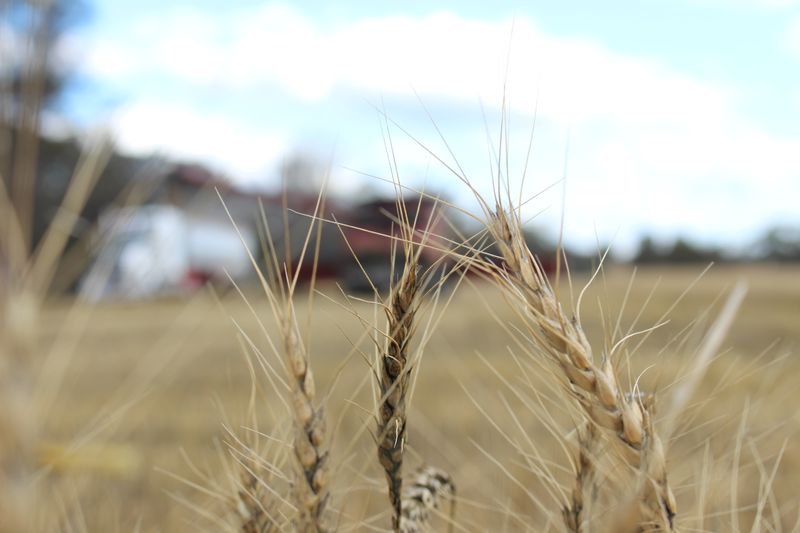By Peter Hobson
CANBERRA (Reuters) – Australia is poised to produce much more wheat and other crops this year than previously thought after rainfall confounded expectations that an El Nino weather pattern would maintain dry and hot conditions, analysts and industry associations said.
Australia is one of the world’s biggest agricultural exporters, shipping goods from wheat and barley to cotton and beef.
The scale of the weather turnaround has been striking, with the driest three-month period on record between August and October giving way to what some landowners say is their greenest summer in memory.
While rain has caused some flooding and crop destruction, higher overall production should lift the value of Australian farm output.
At current prices, the extra wheat, barley, canola, sorghum and cotton that analysts think is likely to be harvested thanks to the rain is worth roughly $2.5 billion, Reuters calculations show.
A larger wheat harvest would add to a global surplus.
Some in the farm sector, especially in livestock, are angry at the country’s weather bureau, saying they made decisions based on predictions for a dry El Nino period that turned out to be wrong.
“They really cocked it up,” said livestock agent Mat Larkings, adding that he had sold cattle in a collapsing market for a farmer who worried his animals would not have enough grass, only to see rain turn pastures green and prices rebound.
“A lot of people rely on what they are reading from these weather forecasts,” he said.
The Australian Bureau of Meteorology said its forecasts include many factors and carry an inherent uncertainty, and there was no evidence that they had had a significant effect on livestock prices.
MORE GROWTH
The rain, which mainly fell across eastern and southern regions, has transformed the outlook for many Australian crops.
“Everything is heading for amazing,” said Ole Houe at IKON Commodities in Sydney.
He expected a roughly 30 million metric ton wheat harvest instead of around 24-25 million tons if the weather had remained dry.
The upcoming barley crop could be 2 million tons larger than if the rain had not fallen and around 200,000 more tons of canola could be brought in, according to consultants Episode 3.
Commonwealth Bank forecast the next wheat harvest at 31.4 million tons, barley at 12.7 million tons and canola at 5.8 million tons.
With those crops not yet planted and the harvest not due until around November, these numbers could change, said the bank’s analyst, Dennis Voznesenski.
Sorghum and cotton are already in the ground and heading for harvest around April.
Rod Baker at Australian Crop Forecasters said he had lifted his sorghum estimate to 1.7 million tons and some analysts predict up to 2.5 million tons, far above a government forecast of 1.5 million tons made in December.
Cotton Australia, an industry association, has raised its production estimate to 4.4-4.5 million bales from around 4 million a few months ago.
Rains have also boosted sugar yields, but this has been offset by damage to some northern cropping areas from flooding in the aftermath of Cyclone Jasper last month.
Richer pastures could slightly reduce meat exports as more animals are kept on farm, while reducing the amount of grain needed for animal feed, freeing it up for sale overseas, analysts said.
Cattle and sheep prices have shot up, though they remain below the highs of 2021 and 2022.
CAUTION
Some caution remains among farmers, however.
The weather bureau predicts median or above-median rainfall for much of eastern and southern Australia in the coming weeks, but it is unclear whether the El Nino phenomenon, which typically brings drier conditions, will end.
Australia is prone to swings between lengthy wet and dry periods and after three rainy years in 2020-22 and a rainy last few months, a reversal will eventually come, said Matt Dalgleish at Episode 3.
“A dry spell will come and hit us at some stage,” he said.
(Reporting by Peter Hobson; Editing by Tony Munroe and Stephen Coates)
